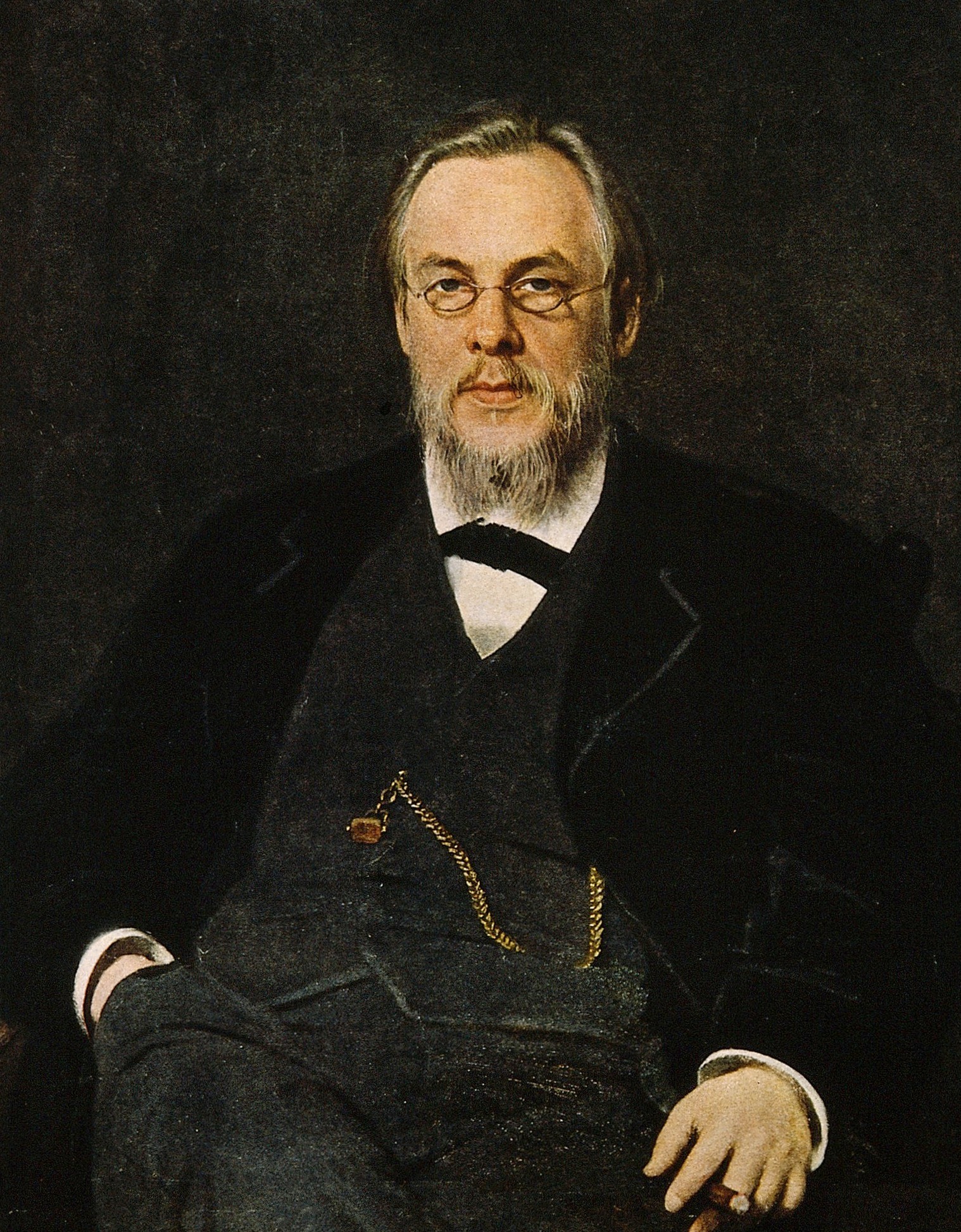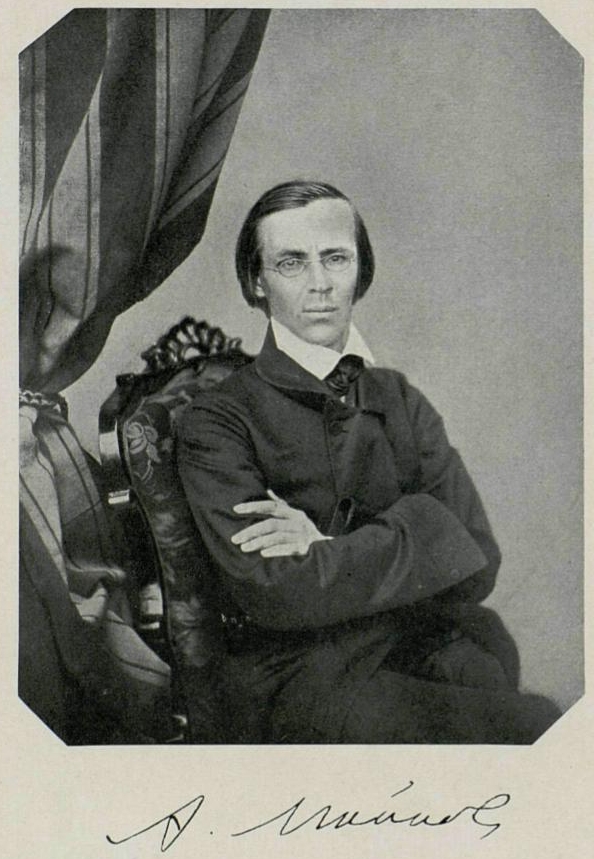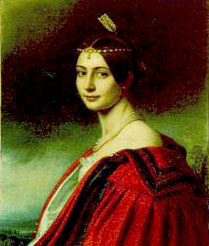|
Voskresensky Novodevichy Monastery
Voskresensky Novodevichy monastery in St. Petersburg – a convent of the St. Petersburg diocese of the Russian Orthodox Church near the Moscow outpost at 100 Moskovsky Prospekt. History of the monastery The predecessors of the monastery Initially, the Voskresensky Monastery for Women was supposed to be built on the site of the Smolny Yard on the Neva. October 30 (November 10), 1748, by decree of Empress Elizabeth Petrovna, the Smolny maiden monastery was founded. However, the construction of the monastery was delayed due to the ongoing Seven Years' War. Only in 1764 the abbess and five nuns were appointed here. The monastery ceased to exist in 1822, when not a single nun remained in it. The first-class convent in St. Petersburg was renewed on March 14 (26), 1845 by decree of Nicholas I. The nuns were placed on Vasilyevsky Island in the former house of the abolished Greek Uniate Theological College. And services for them were performed in the lower church of the neighbori ... [...More Info...] [...Related Items...] OR: [Wikipedia] [Google] [Baidu] |
Elizaveta Petrovna
Elizabeth Petrovna (russian: Елизаве́та (Елисаве́та) Петро́вна) (), also known as Yelisaveta or Elizaveta, reigned as Empress of Russia from 1741 until her death in 1762. She remains one of the most popular Russian monarchs because of her decision not to execute a single person during her reign, her numerous construction projects, and her strong opposition to Prussian policies. The second-eldest daughter of Tsar Peter the Great (), Elizabeth lived through the confused successions of her father's descendants following her half-brother Alexei's death in 1718. The throne first passed to her mother Catherine I of Russia (), then to her nephew Peter II, who died in 1730 and was succeeded by Elizabeth's first cousin Anna. After the brief rule of Anna's infant great-nephew, Ivan VI, Elizabeth seized the throne with the military's support and declared her own nephew, the future Peter III, her heir. During her reign Elizabeth continued the policies of her ... [...More Info...] [...Related Items...] OR: [Wikipedia] [Google] [Baidu] |
Theotokos
''Theotokos'' (Greek: ) is a title of Mary, mother of Jesus, used especially in Eastern Christianity. The usual Latin translations are ''Dei Genitrix'' or ''Deipara'' (approximately "parent (fem.) of God"). Familiar English translations are "Mother of God" or "God-bearer" – but these both have different literal equivalents in Greek, Μήτηρ Θεοῦ and Θεοφόρος ("Who gave birth to one who was God", "Whose child was God", respectively). The title has been in use since the 3rd century, in the Syriac tradition (as ) in the Liturgy of Mari and Addai (3rd century)''Addai and Mari, Liturgy of''. Cross, F. L., ed. ''The Oxford Dictionary of the Christian Church''. Oxford University Press. 2005. and the Liturgy of St James (4th century). The Council of Ephesus in AD 431 decreed that Mary is the ''Theotokos'' because Her Son Jesus is both God and man: one divine person from two natures (divine and human) intimately and hypostatically united. The title of Mother o ... [...More Info...] [...Related Items...] OR: [Wikipedia] [Google] [Baidu] |
Konstantin Pobedonostsev
Konstantin Petrovich Pobedonostsev ( rus, Константи́н Петро́вич Победоно́сцев, p=kənstɐnʲˈtʲin pʲɪˈtrovʲɪtɕ pəbʲɪdɐˈnostsɨf; 30 November 1827 – 23 March 1907) was a Russian jurist, statesman, and adviser to three Tsars. He became the chief spokesman for reactionary positions and the éminence grise of imperial politics during the reign of Alexander III of Russia (1881–1894), holding, between 1880 and 1905, the position of Ober-Procurator of the Most Holy Synod, the non-clerical Russian official who supervised the Russian Orthodox Church. His writings on politics, law, art, and culture emphasized the positive element of the spiritual and secular unification of Russia with the acceptance of Christianity while simultaneously condemning the Jewish population. He warned of the negative element in Russia, portraying democratic and liberal movements as enemies of the national and religious unity of Russian people. Achieving a harm ... [...More Info...] [...Related Items...] OR: [Wikipedia] [Google] [Baidu] |
Holy Synod
In several of the autocephalous Eastern Orthodox churches and Eastern Catholic Churches, the patriarch or head bishop is elected by a group of bishops called the Holy Synod. For instance, the Holy Synod is a ruling body of the Georgian Orthodox Church. In Oriental Orthodoxy the Holy Synod is the highest authority in the church and it formulates the rules and regulations regarding matters of church organization, faith, and order of service. Early synods The principle of summoning a synod or council of ecclesiastical persons to discuss some grave question affecting the Church goes back to the very beginning of the Church's history. Since the day when the Apostles met at Jerusalem to settle whether Gentile converts were to keep the Old Law (Acts 15:6–29), it had been the custom to call together such gatherings as occasion required. Bishops summoned synods of their clergy, metropolitans and patriarchs summoned their suffragans, and then since 325 there was a succession of t ... [...More Info...] [...Related Items...] OR: [Wikipedia] [Google] [Baidu] |
Sergey Botkin
Sergey Petrovich Botkin (russian: Серге́й Петро́вич Бо́ткин; 5 September 1832 – 12 December 1889) was a famous Russian clinician, therapist, and activist, one of the founders of modern Russian medical science and education. He introduced triage, pathological anatomy, and post mortem diagnostics into Russian medical practice. Life and career Botkin was born on 5 September 1832, in Moscow to a family of famous Russian tea tradesmen, and the son of Anna Ivanovna (Postnikova) and Petr Kononovich Botkin. He made his first steps towards education in the private school of Ennes. In 1850 Botkin was admitted to Moscow State University. In 1855 Sergey Botkin graduated from the university with honors and received a Doctor of Medicine degree. Shortly afterwards however he was mobilized as a conscript, designated to serve as military surgeon and sent straight to Sevastopol, where the Crimean War was in full swing. There Botkin worked under the guidance of Nikolay Pirog ... [...More Info...] [...Related Items...] OR: [Wikipedia] [Google] [Baidu] |
Aleksandr Golovin (artist)
Aleksandr Yakovlevich Golovin (russian: Алекса́ндр Я́ковлевич Голови́н, ; – 17 April 1930) was a Russian artist and stage designer. He designed productions for Sergei Diaghilev, Constantin Stanislavski, and Vsevolod Meyerhold. Born at Moscow, Golovin initially studied architecture, later switching to painting. He also attended the Académie Colarossi. Due to financial difficulties, upon graduation he worked as an interior painter and decorator. He also tried his hand at various artistic fields such as furniture design. In 1900 he took part in designing the Russian Empire pavilion at the Paris World's Fair together with his friend K.A. Korovin. He studied at the Académie Vitti in Paris. In 1901 he moved to the Saint Petersburg region from Moscow. It was here that he came into his own as a stage designer, combining symbolism and modernism on operatic and dramatic productions for Diaghilev, Meyerhold and others. After the Revolution of 1917, Go ... [...More Info...] [...Related Items...] OR: [Wikipedia] [Google] [Baidu] |
Mikhail Vrubel
Mikhail Aleksandrovich Vrubel (russian: Михаил Александрович Врубель; March 17, 1856 – April 14, 1910, all New Style, n.s.) was a Russian Painting, painter, Drawing, draughtsman, and sculptor. A prolific and innovative master in various media such as painting, drawing, decorative sculpture, and theatrical art, Vrubel is generally characterized as one of the most important artists in Russian symbolism, Russian Symbolist tradition and a pioneering figure of Modernist art. In a 1990 biography of Vrubel, the Soviet art historian considered his life and art as a three-act drama with prologue and epilogue, while the transition between acts was rapid and unexpected. The "Prologue" refers to his earlier years of studying and choosing a career path. The "first act" peaked in the 1880s when Vrubel was studying at the Imperial Academy of Arts and then moved to Kiev to study Byzantine art, Byzantine and Christian art. The "second act" corresponded to the so- ... [...More Info...] [...Related Items...] OR: [Wikipedia] [Google] [Baidu] |
Apollon Maykov
Apollon Nikolayevich Maykov (russian: Аполло́н Никола́евич Ма́йков, , Moscow – , Saint Petersburg) was a Russian poet, best known for his lyric verse showcasing images of Russian villages, nature, and history. His love for ancient Greece and Rome, which he studied for much of his life, is also reflected in his works. Maykov spent four years translating the epic ''The Tale of Igor's Campaign'' (1870) into modern Russian. He translated the folklore of Belarus, Greece, Serbia and Spain, as well as works by Heine, Adam Mickiewicz and Goethe, among others. Several of Maykov's poems were set to music by Russian composers, among them Rimsky-Korsakov and Tchaikovsky. Maykov was born into an artistic family and educated at home, by the writer Ivan Goncharov, among others. At the age of 15, he began writing his first poetry. After finishing his gymnasium course in just three years, he enrolled in Saint Petersburg University in 1837. He began publishing his poem ... [...More Info...] [...Related Items...] OR: [Wikipedia] [Google] [Baidu] |
Fyodor Tyutchev
Fyodor Ivanovich Tyutchev ( rus, Фёдор Ива́нович Тю́тчев, r=Fyódor Ivánovič Tyútčev, links=1, p=ˈfʲɵdər ɪˈvanəvʲɪt͡ɕ ˈtʲʉt͡ɕːɪf; Pre-Reform orthography: ; – ) was a Russian poet and diplomat. Life Tyutchev was born into a Russian noble family in the Ovstug family estate near Bryansk (modern-day Zhukovsky District, Bryansk Oblast of Russia). His father Ivan Nikolaevich Tyutchev (1768—1846) was a court councillor who served in the Kremlin Expedition that managed all building and restoration works of Moscow palaces. One of Ivan's sister (1774—1837), was a hegumenia famous for founding the Borisoglebsky Anosin Women's Monastery.'' Ivan Aksakov (1997)''. Fyodor Ivanovich Tyutchev's Biography. — Moscow: AO Book and Business, p. 172-173 ''Gennady Chagin (2004)''. Fyodor Ivanovich Tyutchev. — Moscow: Russkiy mir, p. 17 The Tyutchevs traced their roots to Zakhariy Tutchev mentioned in ''The Tale of the Rout of Mamai'', a 1 ... [...More Info...] [...Related Items...] OR: [Wikipedia] [Google] [Baidu] |
Nikolay Nekrasov
Nikolay Alexeyevich Nekrasov ( rus, Никола́й Алексе́евич Некра́сов, p=nʲɪkɐˈlaj ɐlʲɪkˈsʲejɪvʲɪtɕ nʲɪˈkrasəf, a=Ru-Nikolay_Alexeyevich_Nekrasov.ogg, – ) was a Russian poet, writer, critic and publisher, whose deeply compassionate poems about the Russian peasantry made him a hero of liberal and radical circles in the Russian intelligentsia of the mid-nineteenth century, particularly as represented by Vissarion Belinsky and Nikolay Chernyshevsky. He is credited with introducing into Russian poetry ternary meters and the technique of dramatic monologue (''On the Road'', 1845). As the editor of several literary journals, notably ''Sovremennik'', Nekrasov was also singularly successful and influential. Biography Early years Nikolay Alexeyevich Nekrasov was born in Nemyriv (now in Vinnytsia Oblast, Ukraine), in the Bratslavsky Uyezd of Podolia Governorate. His father Alexey Sergeyevich Nekrasov (1788-1862) was a descendant from Russian l ... [...More Info...] [...Related Items...] OR: [Wikipedia] [Google] [Baidu] |
Paul The Apostle
Paul; grc, Παῦλος, translit=Paulos; cop, ⲡⲁⲩⲗⲟⲥ; hbo, פאולוס השליח (previously called Saul of Tarsus;; ar, بولس الطرسوسي; grc, Σαῦλος Ταρσεύς, Saũlos Tarseús; tr, Tarsuslu Pavlus; la, Paulus Tarsensis AD), commonly known as Paul the Apostle and Saint Paul, was a Christian apostle who spread the teachings of Jesus in the first-century world. Generally regarded as one of the most important figures of the Apostolic Age, he founded several Christian communities in Asia Minor and Europe from the mid-40s to the mid-50s AD. According to the New Testament book Acts of the Apostles, Paul was a Pharisee. He participated in the persecution of early disciples of Jesus, possibly Hellenised diaspora Jews converted to Christianity, in the area of Jerusalem, prior to his conversion. Some time after having approved of the execution of Stephen, Paul was traveling on the road to Damascus so that he might find any Christians ... [...More Info...] [...Related Items...] OR: [Wikipedia] [Google] [Baidu] |
Tsarskoye Selo
Tsarskoye Selo ( rus, Ца́рское Село́, p=ˈtsarskəɪ sʲɪˈlo, a=Ru_Tsarskoye_Selo.ogg, "Tsar's Village") was the town containing a former residence of the Russian imperial family and visiting nobility, located south from the center of Saint Petersburg. The residence now forms part of the town of Pushkin. Tsarskoye Selo forms one of the World Heritage Site Saint Petersburg and Related Groups of Monuments. The town bore the name Tsarskoe Selo until 1918, Detskoe Selo ( ru , Детское Село , translation = Children's Village) between in the years 1918–1937, then Pushkin ( ru , Пушкин) from 1937 onwards. History The area of Tsarskoye Selo, once part of Swedish Ingria, first became a Russian royal/imperial residence in the early 18th century as an estate of the Empress-consort Catherine (later Empress-regnant as Catherine I, ), from whom the Catherine Palace takes its name. The Alexander Palace (built from 1792 onwards) originated as the home ... [...More Info...] [...Related Items...] OR: [Wikipedia] [Google] [Baidu] |
.jpg)








.jpg)
.jpg)